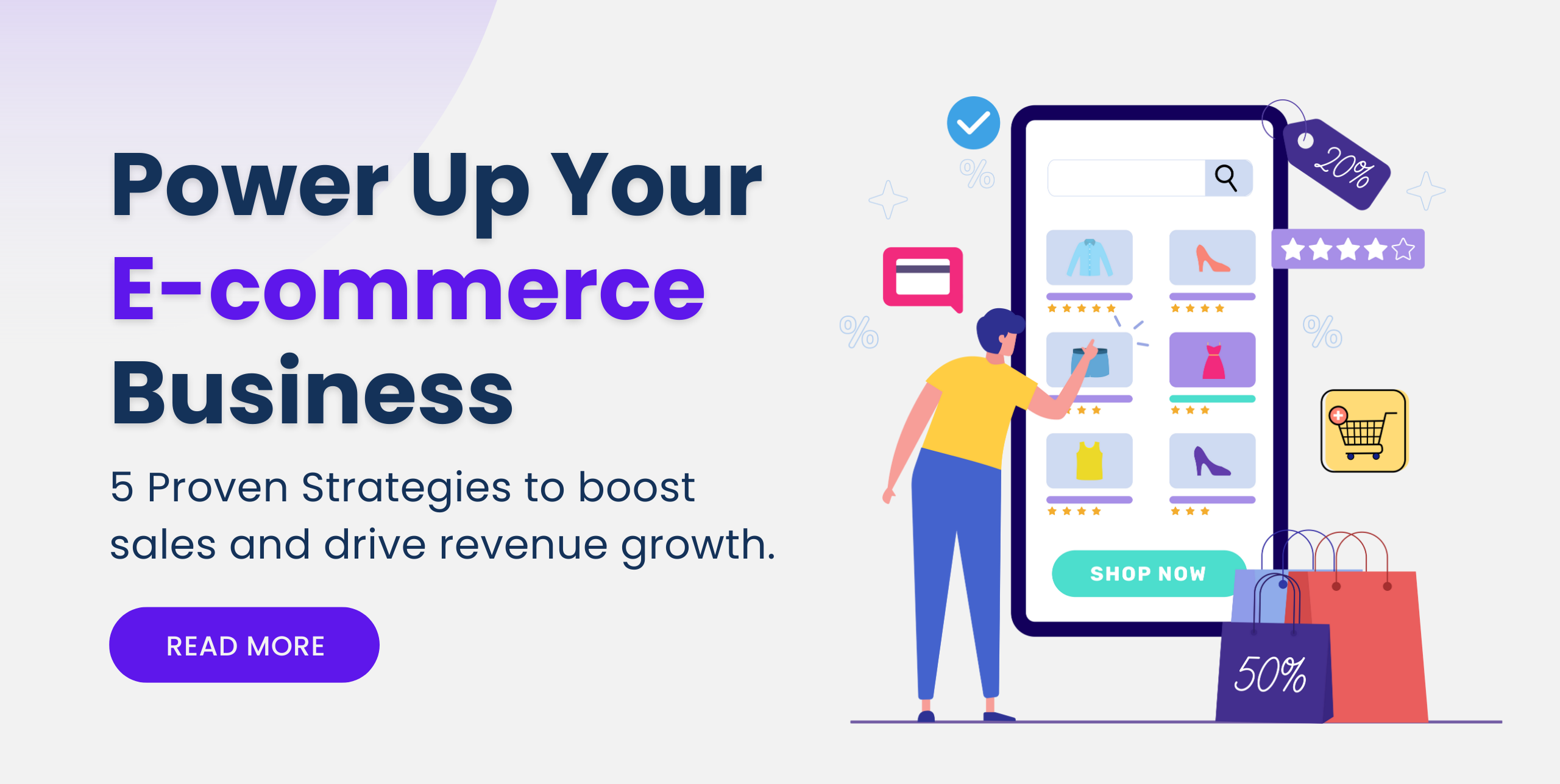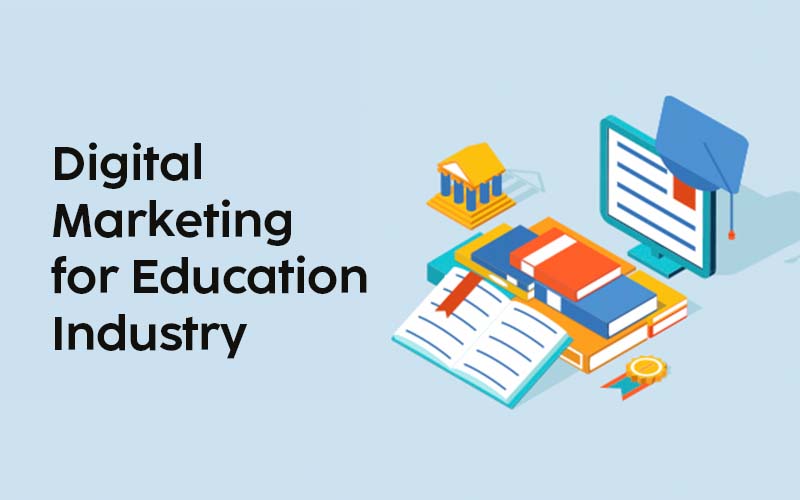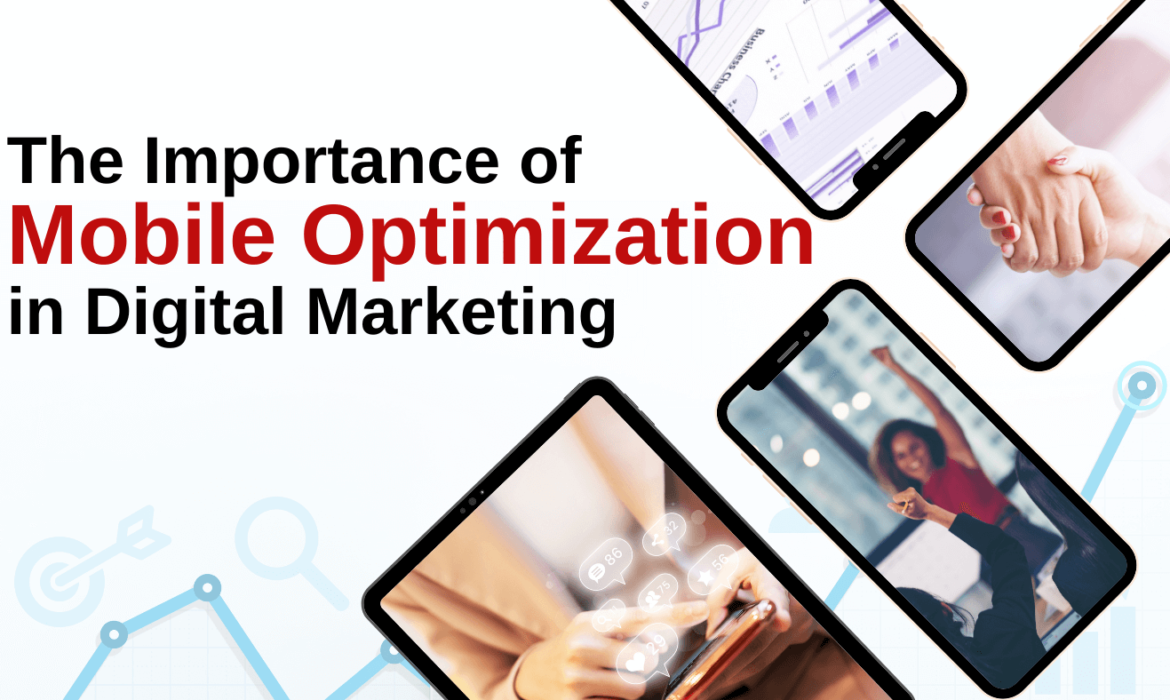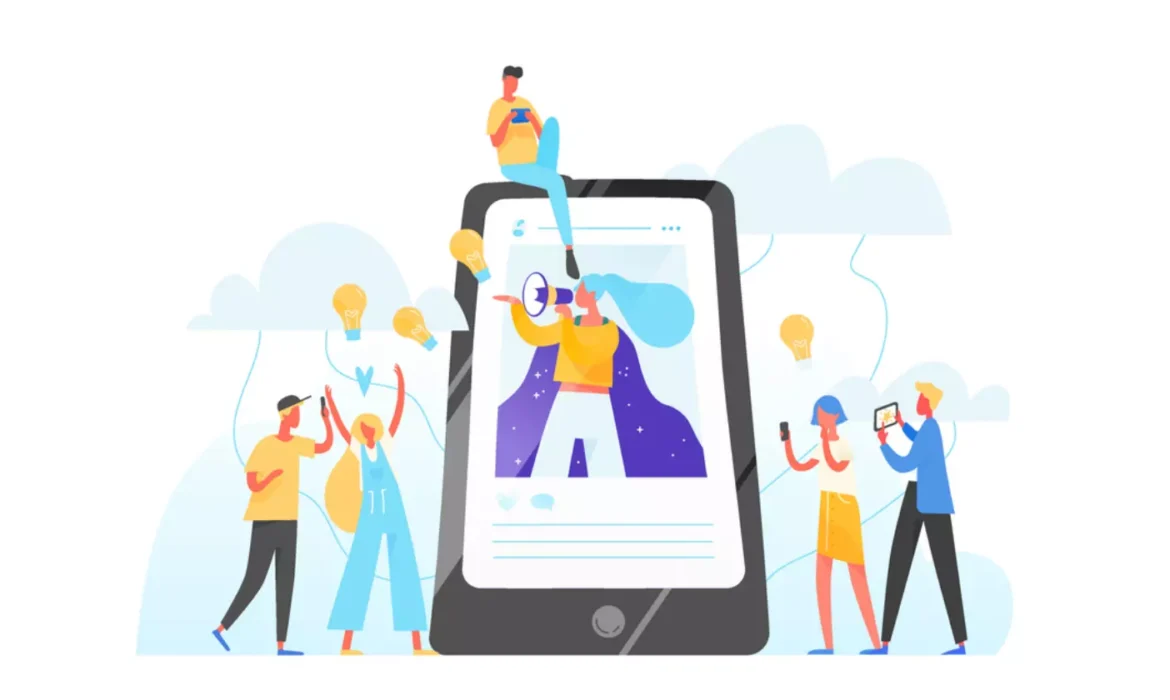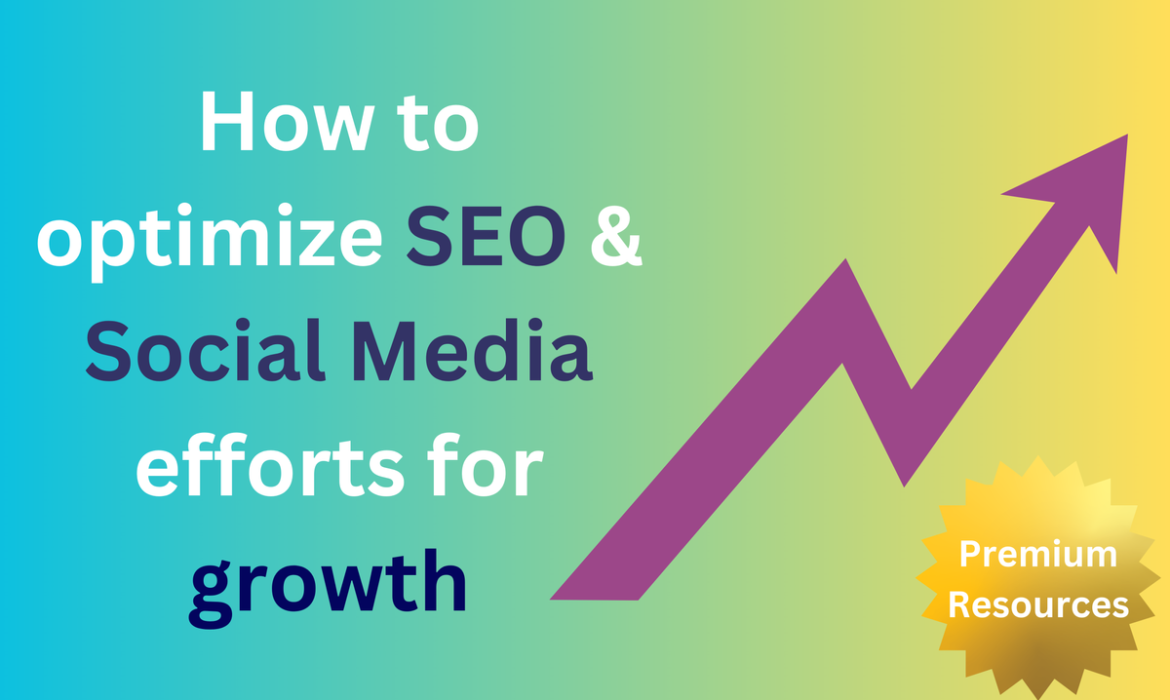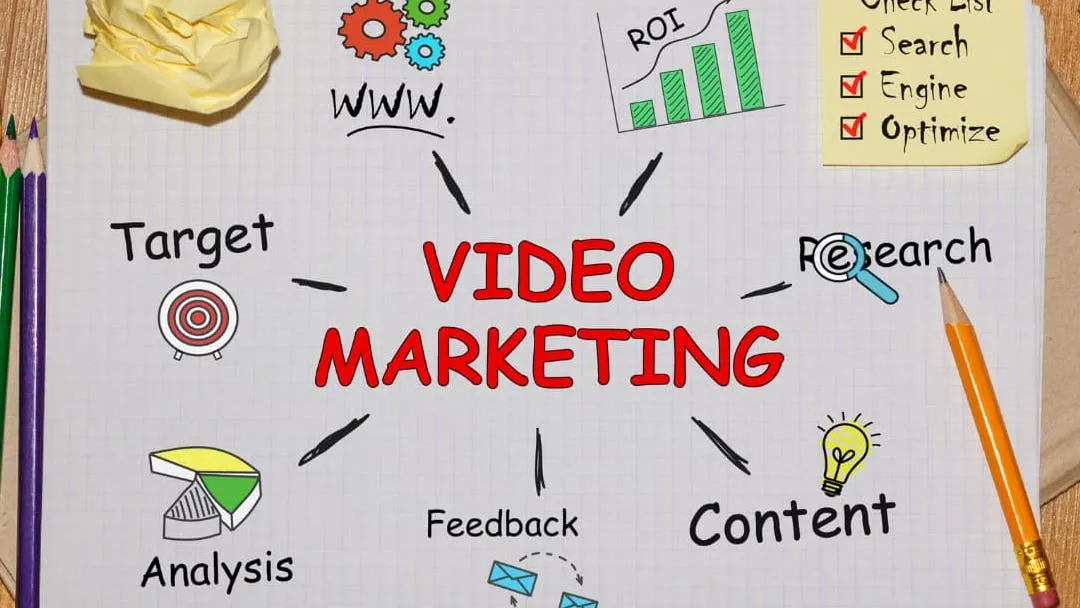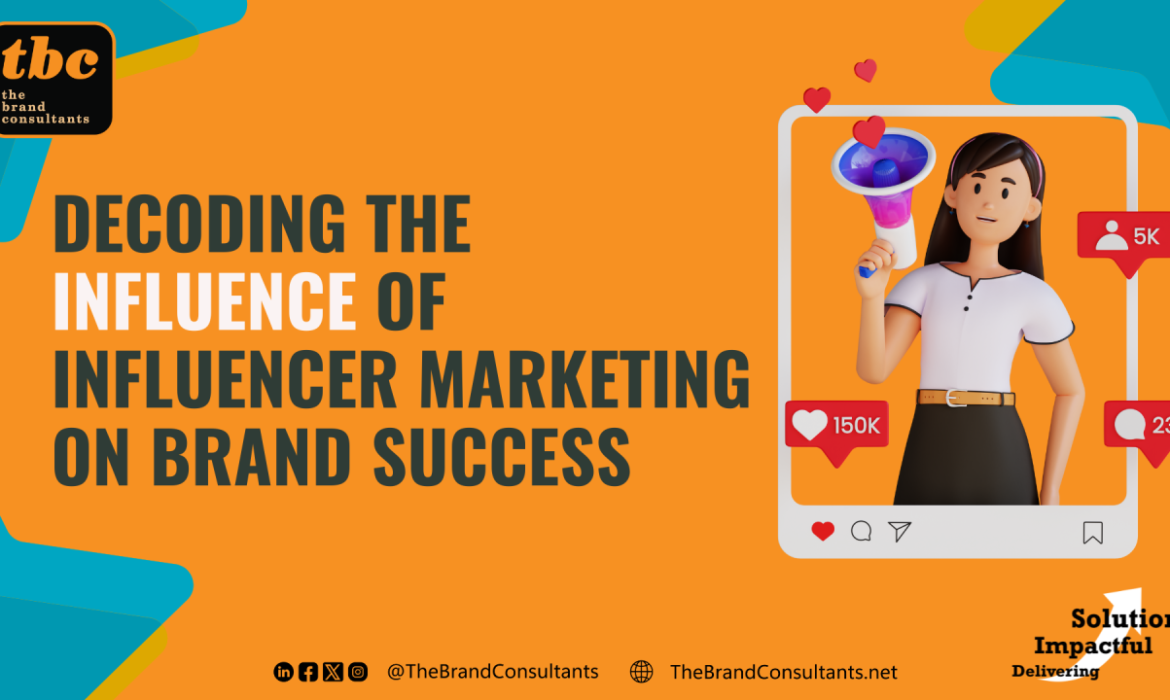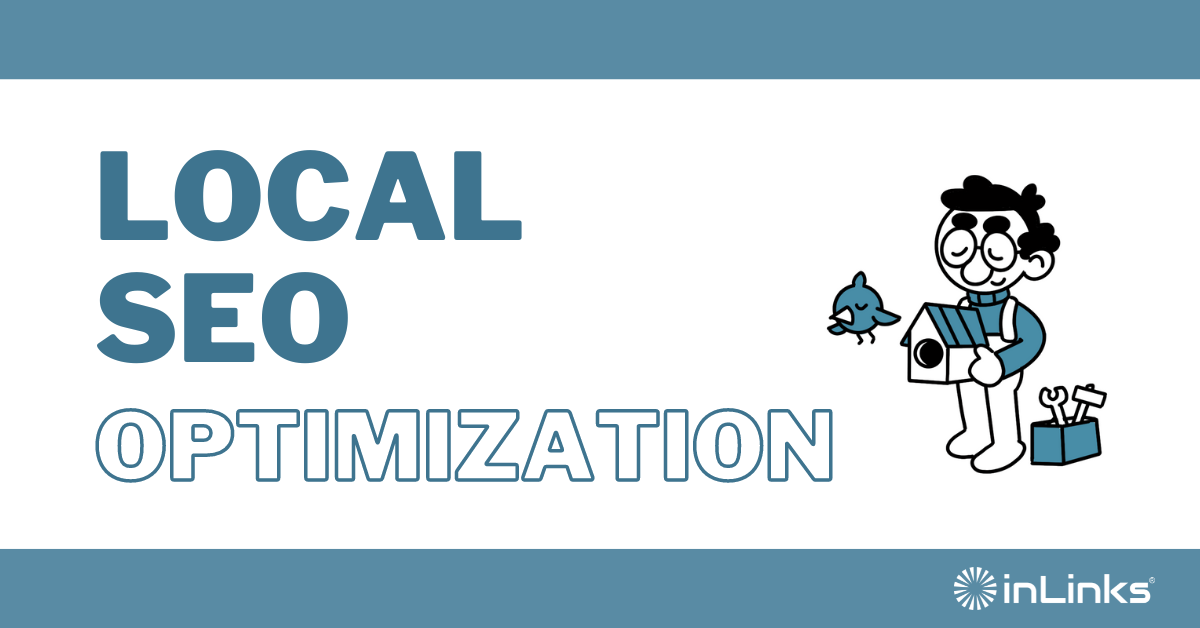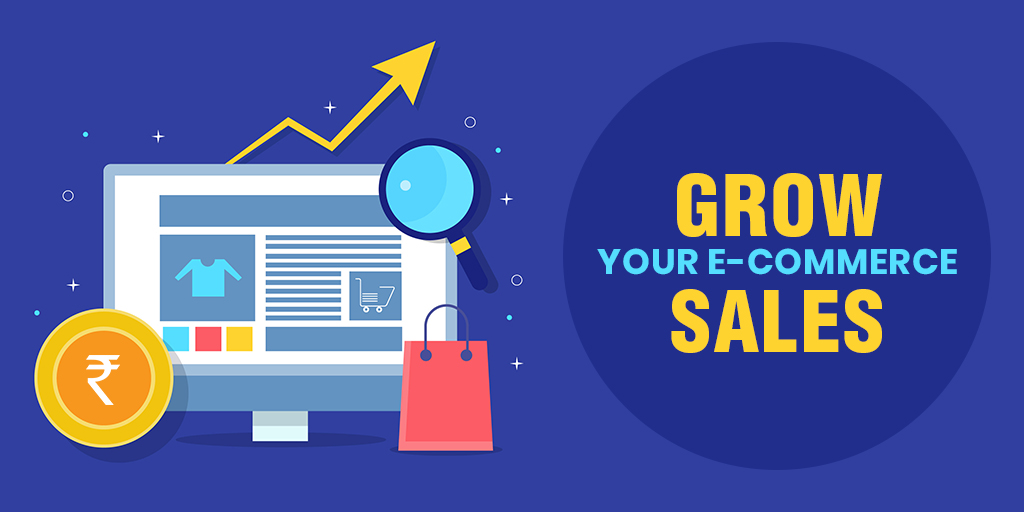+91-9625063767
Agency For Educational Services
Introduction
Agency For Educational Services In today’s fast-paced world, students and parents often seek guidance to navigate the complexities of education. An Agency for Educational Services plays a vital role in offering professional counseling, admissions assistance, test preparation, and career guidance to ensure students make informed academic and professional choices. Agency For Educational Services With a growing demand for quality education and structured career pathways, these agencies bridge the gap between ambition and achievement.
What is an Agency for Educational Services?
An Agency for Educational Services is an organization that provides comprehensive support to students seeking admission to schools, colleges, and universities. These agencies help with:
- Career counseling and academic guidance
- College and university admissions
- Test preparation for standardized exams
- Visa assistance for studying abroad
- Scholarships and financial aid consultancy
By offering customized solutions, these agencies simplify the application process and ensure students choose the right institutions that align with their academic goals.
Key Services Offered by Educational Agencies
1. Career Counseling and Academic Guidance
One of the most crucial services offered by educational agencies is career counseling. With multiple career options available, students often struggle to make the right choices. Agencies provide expert guidance through:
- Aptitude and personality assessments to identify strengths
- One-on-one counseling sessions with education experts
- Workshops and seminars on career trends and opportunities
This guidance ensures that students choose a career path that matches their skills, interests, and aspirations.
2. College and University Admissions Assistance
Applying to colleges and universities can be overwhelming. An educational agency simplifies this process by assisting with:
- Selecting the best institutions based on student preferences
- Preparing and reviewing application documents
- Crafting personal statements and SOPs (Statement of Purpose)
- Guiding students through admission interviews
These services increase the chances of acceptance into prestigious institutions, ensuring students have a smooth application experience.
3. Test Preparation Services
Many universities and colleges require standardized test scores for admission. Educational agencies offer coaching classes and study materials for exams like: Agency For Educational Services
- SAT, ACT, GRE, and GMAT for international admissions
- IELTS and TOEFL for English language proficiency
- NEET, JEE, and CLAT for professional courses in India
With expert instructors and personalized coaching, students can improve their scores and secure admissions to their dream institutions.
4. Study Abroad Consultancy
For students aiming to study overseas, educational agencies provide step-by-step guidance for:
- Choosing the right country and university
- Visa application and documentation
- Pre-departure orientation and accommodation assistance
Countries like the USA, UK, Canada, Australia, and Germany are popular study destinations, and agencies help students navigate complex admission and visa processes efficiently Agency For Educational Services.
5. Scholarships and Financial Aid Assistance
Many students require financial assistance to pursue higher education. Agencies assist in identifying and applying for:
- Merit-based scholarships
- Need-based financial aid
- Government and private grants
- Education loans with low-interest rates
By securing financial support, students can fulfill their educational aspirations without financial constraints.
6. Skill Development and Training Programs
Beyond academics, educational agencies also offer skill enhancement programs to prepare students for professional success. These include: Agency For Educational Services
- Soft skills and personality development training
- Resume writing and job interview preparation
- Internship and job placement assistance
Equipping students with these skills ensures they are job-ready upon graduation.
Why Choose an Educational Agency?
There are several advantages to partnering with an Agency for Educational Services:
- Expert Guidance – Professional counselors provide accurate and up-to-date information about courses, colleges, and career options Agency For Educational Services.
- Time-Saving – Students can avoid confusion and delays by receiving structured guidance on application deadlines and requirements.
- Higher Acceptance Rates – With expert counseling and well-prepared applications, students increase their chances of securing admissions and scholarships. Agency For Educational Services
- Comprehensive Support – From career counseling to visa processing, agencies offer end-to-end services to ensure a seamless experience.
How to Choose the Right Educational Agency?
With numerous agencies offering educational services, selecting the right one is crucial. Consider the following factors:
- Experience and reputation – Look for agencies with a successful track record.
- Accreditation and partnerships – Ensure they are recognized by educational institutions.
- Range of services – Choose an agency that offers comprehensive solutions beyond just admissions.
- Student testimonials and reviews – Check feedback from previous clients.
Conclusion
An Agency for Educational Services is a valuable resource for students seeking academic and career success. Whether it’s career counseling, admission guidance, test preparation, or study abroad consultancy, these agencies play a vital role in helping students make informed decisions. By choosing the right agency, students can ensure a smooth and successful educational journey, leading to a bright future.
Agency For Educational Services

Agency for Educational Services: Guiding Students Towards Success
Education is the cornerstone of success, shaping the future of students by equipping them with the necessary knowledge and skills. Choosing the right agency for educational services can make a significant difference in a student’s academic journey. These agencies provide essential guidance, counseling, and resources to help students make informed decisions about their education and career paths.
What is an Educational Services Agency?
An educational services agency is an organization that supports students, parents, and educational institutions by offering academic counseling, career guidance, test preparation, admission assistance, and tutoring services. These agencies work closely with students to help them navigate the complexities of education, ensuring they have access to the best opportunities for personal and professional growth.
Key Services Provided by Educational Agencies
1. Career Counseling and Academic Guidance
One of the primary services of an educational agency is career counseling. With the vast number of career options available, students often struggle to make the right choice. Career counselors assess students’ strengths, interests, and aspirations to suggest suitable career paths and educational programs.
2. College and University Admissions Assistance
Applying for higher education can be overwhelming, with various universities requiring different criteria and application processes. Educational agencies help students with college applications, personal statements, entrance exams, and scholarship opportunities to ensure they get into their dream institutions.
3. Standardized Test Preparation
Competitive exams such as SAT, ACT, GRE, GMAT, IELTS, and TOEFL play a crucial role in securing admission to prestigious universities. Educational agencies offer specialized coaching, mock tests, and personalized study plans to improve students’ performance in these exams.
4. Study Abroad Consultation
Many students aspire to study abroad, but the process can be complex, involving visa applications, financial planning, and choosing the right course. Educational agencies provide end-to-end support, including guidance on international universities, course selection, application submission, and visa processing.
5. Tutoring and Academic Support
Whether a student needs help with mathematics, science, language, or humanities, educational agencies provide personalized tutoring and academic support to enhance their learning experience. With expert tutors and customized lesson plans, students can improve their understanding of subjects and boost their academic performance.
6. Skill Development and Training Programs
Beyond academics, skill development is essential for students to succeed in the professional world. Many agencies offer training in communication skills, leadership, problem-solving, and technical skills to prepare students for their future careers.
How Educational Agencies Benefit Students
1. Personalized Learning Plans
Each student has unique learning needs and career aspirations. Educational agencies develop customized learning plans that cater to individual goals, ensuring a more effective and engaging education journey.
2. Expert Guidance and Mentorship
Students receive mentorship from experienced professionals who provide valuable insights and advice to help them make the right decisions about their education and career.
3. Stress-Free Application Process
With so many universities and courses available, applying to colleges can be stressful. Educational agencies simplify the process, ensuring students submit strong applications that increase their chances of acceptance.
4. Increased Academic Performance
With access to tutoring, test preparation, and learning resources, students experience improved academic performance, leading to better grades and career prospects.
5. Access to Global Opportunities
For students interested in studying abroad, educational agencies open doors to international universities and scholarships, making global education accessible and achievable.
Choosing the Right Educational Agency
With numerous educational agencies available, choosing the right one is essential. Here are some factors to consider:
- Reputation and Experience: Look for agencies with a strong track record and positive reviews.
- Qualified Counselors and Tutors: Ensure that the agency has certified professionals who can provide reliable guidance.
- Comprehensive Services: Opt for agencies that offer a wide range of services, from academic counseling to test preparation.
- Personalized Approach: The best agencies tailor their guidance to meet the individual needs of each student.
- Success Stories: Check testimonials and case studies of students who have benefited from the agency’s services.
Conclusion
An agency for educational services plays a crucial role in shaping students’ futures by offering expert guidance, academic support, and career counseling. Whether you are a student looking for the best university, need help preparing for exams, or want to study abroad, a reliable educational agency can provide the resources and support you need to succeed. Choosing the right agency ensures a smooth academic journey, unlocking countless opportunities for growth and success in your chosen career path.
If you’re ready to take the next step in your education, partnering with a reputable educational services agency can be the key to achieving your dreams.

Mobile Marketing Optimization
Mobile Marketing Optimization In today’s digital landscape, mobile marketing has become an essential strategy for businesses looking to reach and engage their target audience effectively. With more than half of global web traffic coming from mobile devices, having a mobile-first strategy is no longer optional—it’s a necessity. Brands that embrace mobile optimization can drive better customer experiences, boost engagement, and increase conversions. Mobile Marketing Optimization
This blog explores the key aspects of mobile marketing, the importance of a mobile-first strategy, and how businesses can enhance their digital marketing efforts through mobile optimization.
1. The Rise of Mobile Marketing
The rapid growth of mobile usage has transformed how businesses connect with consumers. From browsing websites to making purchases, users are increasingly relying on their smartphones. Consider these statistics:
- Over 60% of Google searches are conducted on mobile devices.
- 70% of web traffic comes from smartphones Mobile Marketing Optimization.
- Mobile commerce (m-commerce) is expected to surpass $3.5 trillion globally.
These trends highlight the importance of mobile marketing and why brands must adapt their digital presence to meet mobile user expectations.
2. What is a Mobile-First Strategy?
A mobile-first strategy prioritizes the mobile user experience by designing and optimizing content, websites, and marketing campaigns for smartphones and tablets before desktops. This approach ensures that users have a seamless and engaging experience across all devices.
Key Components of a Mobile-First Strategy:
- Responsive Design: Websites automatically adjust to different screen sizes for optimal viewing.
- Fast Load Speeds: Ensuring web pages load quickly on mobile devices to reduce bounce rates.
- Thumb-Friendly Navigation: Optimized buttons, Mobile Marketing Optimization menus, and forms for easy interaction on touchscreens.
- Mobile-Optimized Content: Shorter paragraphs, concise messaging, and visuals that load efficiently.
- Voice Search Optimization: Enhancing content to cater to voice search queries.
By implementing a mobile-first strategy, businesses can improve user experience and stay ahead in the competitive digital marketing landscape Mobile Marketing Optimization.
3. Why Mobile Optimization is Crucial
Mobile optimization ensures that your website, ads, and content perform efficiently on mobile devices. A poorly optimized site can lead to high bounce rates, lost conversions, and lower search rankings. Here’s why mobile optimization is essential:
a) Google’s Mobile-First Indexing
Google predominantly uses the mobile version of a site for ranking and indexing. If your website isn’t mobile-optimized, it may suffer in search rankings, reducing visibility and traffic.
b) Enhanced User Experience
A mobile-optimized website ensures seamless navigation, faster load times, and an overall pleasant experience for users, leading to higher engagement and conversions.
c) Increased Mobile Conversions
With mobile commerce on the rise, a well-optimized mobile experience boosts sales and lead generation. Features such as click-to-call buttons, one-click payments, and mobile-friendly checkout processes enhance conversion rates.
d) Better Engagement with Mobile Users
Users expect businesses to deliver a fast and convenient experience on mobile. Optimized sites keep visitors engaged, reducing bounce rates and improving retention Mobile Marketing Optimization.
4. Key Mobile Marketing Strategies for Business Growth
a) Mobile-Friendly Website & Landing Pages
Ensure that your website is responsive, fast-loading, and user-friendly. Optimize landing pages for mobile screens by:
- Using clear CTAs (Call-to-Action).
- Reducing pop-ups that hinder navigation.
- Compressing images and using lightweight coding.
b) Mobile SEO for Higher Rankings
Enhance your mobile SEO by:
- Using mobile-friendly keywords.
- Optimizing for voice search queries.
- Implementing schema markup for better indexing.
- Ensuring fast page speed and smooth navigation Mobile Marketing Optimization.
c) SMS & Push Notification Marketing
Engage customers directly with:
- SMS Marketing: Send promotions, alerts, and updates to customers.
- Push Notifications: Encourage app engagement and notify users about deals and new content.
d) Social Media Mobile Optimization
With most social media interactions happening on mobile devices, brands must optimize content for platforms like Instagram, Facebook, TikTok, and LinkedIn.
- Use vertical videos and mobile-friendly visuals.
- Optimize social ads for mobile engagement.
- Leverage social commerce for direct purchases.
e) Mobile Apps for Brand Loyalty
Investing in a business mobile app enhances customer retention. Apps allow brands to offer personalized experiences, loyalty programs, and exclusive deals Mobile Marketing Optimization.
f) Location-Based Marketing (Geo-Targeting)
Leverage geo-targeting to deliver location-specific ads and promotions. Google My Business, beacon technology, and local SEO help businesses attract nearby customers Mobile Marketing Optimization.
5. Mobile Advertising: Maximizing ROI
Mobile advertising is an integral part of digital marketing. Key channels include:
- Google Ads (Mobile-Optimized PPC) – Target users with search and display ads tailored for mobile.
- Social Media Ads – Instagram, Facebook, and TikTok ads optimized for mobile users.
- In-App Advertising – Placing ads within popular mobile apps for better reach Mobile Marketing Optimization.
- Video Marketing – Engaging short-form mobile video content to capture attention.
Optimizing ad creatives and landing pages for mobile-first engagement ensures better ROI on digital marketing campaigns.
6. The Future of Mobile Marketing
The mobile-first world continues to evolve, with new trends shaping digital marketing strategies. Businesses must stay ahead by adopting:
- AI & Chatbots – Automated customer service for mobile users.
- 5G Technology – Faster mobile browsing and enhanced video experiences.
- Augmented Reality (AR) – Interactive shopping experiences via mobile apps.
- Personalized Mobile Experiences – AI-driven recommendations for better engagement.
7. Steps to Implement a Mobile-First Strategy
Step 1: Audit Your Current Mobile Performance
Use tools like Google’s Mobile-Friendly Test and PageSpeed Insights to identify areas for improvement.
Step 2: Optimize Website for Mobile
Ensure your site is responsive, fast, and easy to navigate.
Step 3: Invest in Mobile SEO
Enhance search visibility with mobile-optimized keywords, voice search integration, and local SEO.
Step 4: Utilize Mobile Advertising & Social Media
Leverage PPC ads, social media marketing, and video content to engage mobile audiences.
Step 5: Implement Mobile Analytics
Track user behavior with tools like Google Analytics to refine your mobile marketing strategy.
Conclusion
In the mobile-first world, businesses must adapt to stay competitive. Mobile marketing, mobile optimization, and a strong mobile-first strategy are essential to enhancing customer experience and driving digital success Mobile Marketing Optimization.
By embracing mobile-first digital marketing, brands can increase engagement, boost conversions, and build stronger customer relationships. Now is the time to optimize your business for the mobile era—because the future is mobile!
Mobile Marketing Optimization

Track Analyze Optimize
How to Leverage Google Analytics to Improve Your Marketing Campaigns
Track Analyze Optimize In today’s digital world, data plays a crucial role in shaping successful marketing strategies. Google Analytics is a powerful tool that allows businesses to track, measure, and analyze their website performance, providing valuable insights for campaign improvement. By leveraging Google Analytics effectively, marketers can optimize their marketing campaigns, enhance user experience, and drive better results. This guide will walk you through the key ways to use Google Analytics for data-driven marketing success.
1. Understanding Google Analytics and Its Importance
Google Analytics is a free web analytics tool that helps businesses monitor website traffic, user behavior, and conversion rates. By utilizing this tool, marketers can track the effectiveness of their marketing campaigns and make informed decisions to enhance performance. Whether you’re running PPC ads, social media campaigns, or email marketing, Google Analytics provides a wealth of data to refine your strategies Track Analyze Optimize.
2. Setting Up Google Analytics for Your Website
Before diving into analytics, it’s essential to properly set up Google Analytics for your website. Follow these steps:
- Create a Google Analytics account and obtain your tracking ID.
- Add the tracking code to your website’s header or use Google Tag Manager.
- Set up Goals and Events to measure important user actions.
- Enable E-commerce tracking if you run an online store.
3. Tracking Key Metrics for Campaign Improvement
Google Analytics provides a wide range of metrics that help assess the effectiveness of your marketing campaigns. Some of the most important ones include: Track Analyze Optimize
- Traffic Sources – Understand where your visitors are coming from (organic search, paid ads, social media, referrals, direct traffic).
- Bounce Rate – Measures how many users leave after viewing only one page.
- Average Session Duration – Tracks how long users stay on your website.
- Conversion Rate – Shows the percentage of users who complete a desired action (purchase, signup, form submission).
- User Demographics – Analyzes audience segments based on age, gender, location, and interests.
4. Using Google Analytics for Data-Driven Marketing
A. Analyzing Audience Insights
Google Analytics helps identify your target audience by offering detailed reports on their demographics, location, and device usage. Marketers can use this data to:
- Personalize content based on user preferences.
- Optimize website design for mobile and desktop users. Track Analyze Optimize
- Target high-converting audience segments in ad campaigns.
B. Evaluating Traffic Sources for Better Marketing Allocation
Understanding where your traffic comes from allows you to invest more in high-performing channels. The Acquisition Report in Google Analytics categorizes traffic sources into:
- Organic Search (SEO-driven traffic)
- Paid Search (Google Ads, Bing Ads)
- Social Media (Facebook, Instagram, LinkedIn, Twitter)
- Referral Traffic (Traffic from backlinks)
- Direct Traffic (Users who enter your URL manually) By analyzing this data, marketers can optimize their budget allocation and improve ROI. Track Analyze Optimize
C. Monitoring User Behavior for Campaign Optimization
The Behavior Flow Report in Google Analytics reveals how users navigate through your website. This helps identify:
- Pages with high drop-off rates.
- The effectiveness of landing pages.
- Opportunities to improve website structure and user experience. By optimizing underperforming pages, businesses can increase engagement and conversions.
5. Enhancing PPC and Social Media Campaigns with Google Analytics
If you’re running Google Ads or social media ads, integrating them with Google Analytics offers deeper insights into campaign performance. Track Analyze Optimize
- Track Ad Performance – Measure click-through rates (CTR), cost per conversion, and return on ad spend (ROAS).
- Identify High-Converting Keywords – Use the Search Queries Report to refine paid search campaigns.
- Optimize Landing Pages – Analyze bounce rates and conversion paths to enhance user experience.
- Refine Targeting Strategy – Use demographic and behavioral data to adjust ad targeting.
6. A/B Testing and Experimentation for Marketing Campaigns
Google Analytics helps conduct A/B testing to compare different versions of web pages, emails, or ads. Key areas for testing include:
- Headlines and CTAs (Call-to-Actions)
- Landing page designs
- Email subject lines
- Ad copies and visuals By analyzing user engagement and conversion rates, businesses can implement the best-performing variations for maximum impact. Track Analyze Optimize
7. Setting Up Goals and Conversions for Campaign Success
One of the most powerful features in Google Analytics is Goal Tracking. Marketers can set up goals to measure:
- Form submissions
- Newsletter signups
- Product purchases
- Downloadable content (eBooks, whitepapers) By tracking these goals, businesses can determine which marketing efforts drive the best results and focus on improving weak areas. Track Analyze Optimize
8. Using Google Analytics Reports for Campaign Improvement
A. Custom Dashboards for Real-Time Analysis
Marketers can create custom dashboards to display essential metrics in one place. This helps in:
- Monitoring campaign performance in real-time.
- Quickly identifying trends and anomalies.
- Making data-driven decisions without navigating multiple reports.
B. Funnel Analysis to Improve Conversions
The Conversion Funnel Report helps identify drop-off points in the user journey. By analyzing this data, marketers can:
- Optimize checkout processes for e-commerce sites.
- Improve lead generation forms.
- Identify and fix bottlenecks in the sales funnel.
9. Leveraging Google Analytics for Email Marketing Optimization
Google Analytics can also improve email marketing campaigns by:
- Tracking email open rates and click-through rates.
- Identifying the best time to send emails based on user behavior.
- Analyzing email-driven traffic to see which messages convert the most. By integrating email marketing tools like Mailchimp or HubSpot with Google Analytics, businesses can refine their email strategies for better engagement.
10. Advanced Techniques: Using Google Analytics 4 (GA4) for Deeper Insights
With the introduction of Google Analytics 4 (GA4), businesses can gain even more advanced insights. Key features include:
- Event-Based Tracking – More flexible event tracking compared to Universal Analytics.
- Cross-Device Tracking – Improved insights into user journeys across multiple devices.
- AI-Powered Insights – Google’s AI detects trends and provides predictive analytics. Marketers should consider upgrading to GA4 to stay ahead in data-driven marketing.
Conclusion
Google Analytics is an indispensable tool for marketers looking to enhance their marketing campaigns through data-driven marketing. By understanding audience behavior, tracking key metrics, and optimizing campaign performance, businesses can achieve greater success and maximize ROI. Whether you’re running PPC ads, social media campaigns, or email marketing, leveraging Google Analytics effectively will help refine strategies and drive continuous campaign improvement. Start using Google Analytics today to unlock powerful insights and elevate your marketing efforts!
Track Analyze Optimize
Brand Authority via Content
Building Brand Authority Through Thought Leadership and Content Marketing
Introduction
Brand Authority via Content In today’s digital landscape, brand authority is essential for standing out in a crowded marketplace. Establishing credibility requires a strategic blend of thought leadership and content marketing. Businesses that provide value-driven content while demonstrating expertise are more likely to earn trust, attract customers, and enhance their reputation.
This blog explores how businesses can leverage thought leadership and content marketing to build brand authority effectively.
Understanding Brand Authority
Brand authority refers to the level of trust and credibility a business holds in its industry. When consumers perceive a brand as an expert, they are more likely to engage with its products or services. Companies with strong brand authority influence purchasing decisions, maintain customer loyalty, and generate organic growth.
Key Factors That Build Brand Authority:
- Expertise: Demonstrating in-depth knowledge of the industry.
- Consistency: Maintaining a steady flow of high-quality content.
- Engagement: Actively participating in conversations with the audience.
- Authenticity: Providing transparent and valuable insights.
The Role of Thought Leadership in Business Branding
Thought leadership is a strategy where businesses position themselves as industry experts by sharing insights, trends, and innovative ideas. A strong thought leader educates, inspires, and influences their target audience.
How Thought Leadership Builds Brand Authority:
- Enhances Credibility – When you consistently share insightful content, your audience sees you as a trusted source of information.
- Strengthens Business Branding – A well-established thought leader aligns their content with the brand’s core values, reinforcing brand identity.
- Drives Engagement – High-value content sparks conversations, leading to deeper customer relationships.
- Boosts SEO Performance – Search engines favor authoritative content, increasing visibility and organic traffic.
Leveraging Content Marketing to Establish Authority
Content marketing plays a pivotal role in building brand authority by delivering relevant, informative, and engaging content to the right audience. A well-planned content strategy fosters trust, enhances credibility, and strengthens thought leadership.
Effective Content Marketing Strategies: Brand Authority via Content
- Educational Blog Posts
- Create in-depth articles that provide solutions to industry-specific challenges.
- Optimize content with relevant keywords such as brand authority, thought leadership, content marketing, and business branding.
- Incorporate data, research, and case studies to add credibility.
- Guest Blogging and Industry Contributions
- Write guest posts for authoritative websites in your niche.
- Collaborate with industry experts to increase exposure and credibility.
- Video and Podcast Content
- Share insights through video tutorials, expert interviews, and podcast discussions.
- Engage a wider audience by repurposing video content into blog posts, social media snippets, and newsletters.
- Social Media Thought Leadership
- Post consistently on platforms like LinkedIn, Twitter, and Facebook.
- Share industry updates, personal insights, and interactive content to build a loyal community.
- Whitepapers and E-books
- Develop authoritative guides and reports that provide valuable insights.
- Use gated content to generate leads and establish credibility.
- Email Newsletters
- Send regular updates with curated content, industry trends, and expert insights.
- Personalize email marketing campaigns to enhance engagement and trust.
Best Practices for Building Brand Authority
- Create Authentic and Original Content
- Avoid generic or recycled content—offer unique perspectives and expert insights.
- Address pain points and provide actionable solutions.
- Engage with Your Audience
- Respond to comments, questions, and feedback across all platforms.
- Participate in discussions within relevant communities and forums.
- Collaborate with Industry Influencers
- Partner with established thought leaders for joint webinars, interviews, and panel discussions.
- Leverage their audience to expand reach and credibility.
- Optimize for Search Engines
- Implement SEO best practices to improve content visibility.
- Use targeted keywords, backlinks, and schema markup to enhance search rankings.
- Measure and Adapt Your Strategy
- Analyze performance metrics such as website traffic, engagement rates, and lead conversions.
- Adjust content marketing efforts based on data insights.
Case Studies: Brands That Excel in Thought Leadership and Content Marketing
1. HubSpot: The Power of Educational Content
HubSpot has positioned itself as a content marketing leader through its educational blog, courses, and webinars. By consistently providing valuable resources, it has established brand authority in digital marketing and sales automation.
2. Neil Patel: Mastering Thought Leadership
Neil Patel has built a strong thought leadership presence by sharing expert insights on SEO, content marketing, and business growth. His data-driven blog posts, video tutorials, and podcasts make him a go-to resource for marketers worldwide.
3. Salesforce: Leveraging Community Engagement
Salesforce uses content marketing to engage its audience through case studies, industry reports, and thought leadership articles. Its focus on customer success stories enhances trust and strengthens business branding. Brand Authority via Content
https://uncoveruttarakhand.in/
Conclusion
Building brand authority through thought leadership and content marketing is a long-term strategy that requires consistency, authenticity, and value-driven content. By positioning your brand as an industry expert, engaging your audience, and delivering insightful content, you can establish credibility and foster lasting relationships with customers.
Start implementing these strategies today to enhance your business branding and solidify your position as a thought leader in your industry.
Brand Authority via Content
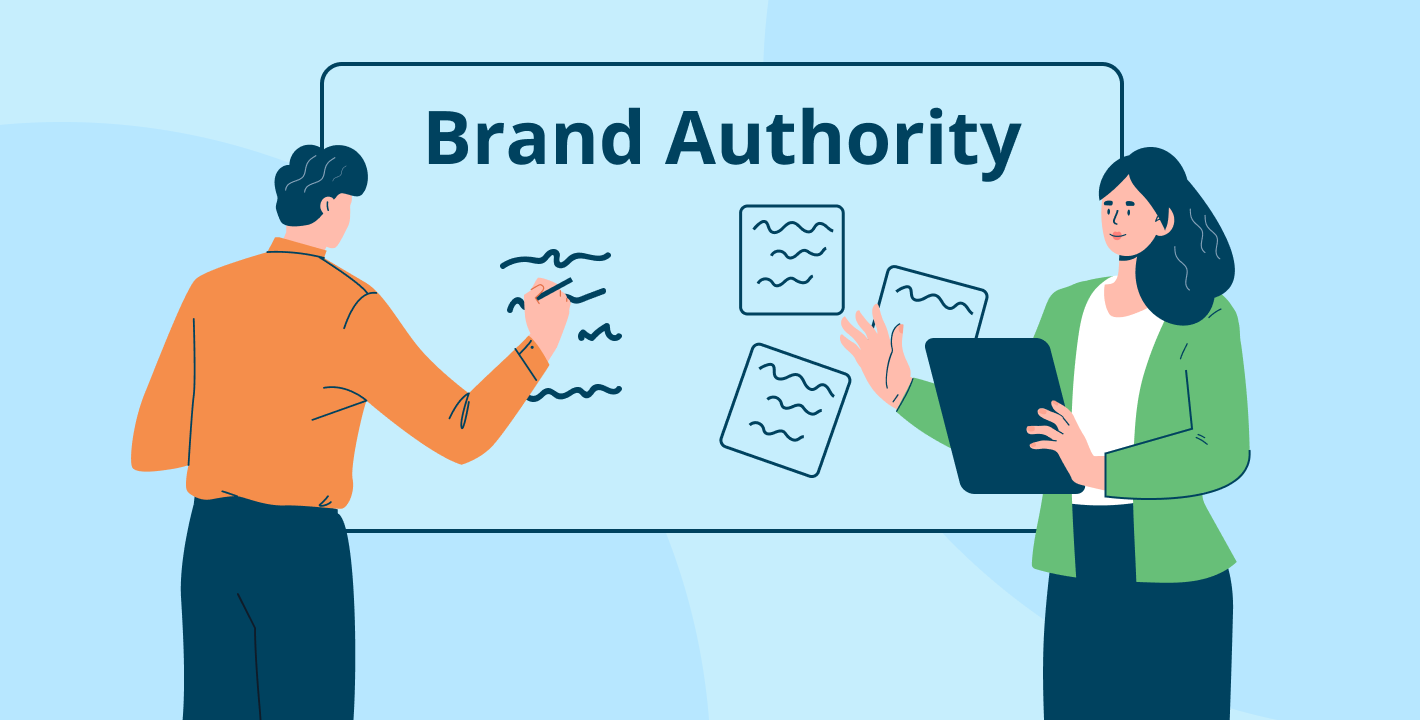

SEO & Content Growth
Why SEO and Content Marketing Go Hand-in-Hand for Business Growth
SEO & Content Growth In today’s fast-paced digital landscape, businesses need to adopt comprehensive strategies to stay ahead of the competition. Among the most effective digital marketing strategies are SEO (Search Engine Optimization) and content marketing. While they may seem like separate strategies, they are, in reality, two sides of the same coin. When implemented together, SEO and content marketing create a powerful synergy that drives business growth and improves brand visibility.
This blog explores why SEO and content marketing should work together and how their integration can lead to sustainable growth for your business.
Understanding SEO and Content Marketing
Before diving into their connection, it’s essential to understand what SEO and content marketing are and how they contribute to digital success.
What is SEO?
SEO (Search Engine Optimization) is the process of optimizing a website to rank higher on search engine result pages (SERPs). The main goal of SEO is to improve organic traffic by making a website more accessible, relevant, and authoritative in the eyes of search engines like Google. SEO encompasses various techniques, including:
- Keyword research: Identifying the most relevant search terms your target audience is using.
- On-page optimization: Enhancing meta tags, headers, and images for better visibility.
- Technical SEO: Improving site speed, mobile-friendliness, and indexing.
- Backlink building: Earning high-quality links from authoritative websites.
What is Content Marketing?
Content marketing involves creating and distributing valuable, relevant, and consistent content to attract and retain a target audience. Unlike traditional advertising, content marketing focuses on providing informative and engaging content that educates or entertains users. Some popular forms of content marketing include: SEO & Content Growth
- Blog posts
- Articles
- Infographics
- Videos
- Podcasts
- E-books
- Social media content
Now that we have a clear understanding of both, let’s explore why SEO and content marketing must go hand-in-hand.
Why SEO and Content Marketing Work Best Together
1. SEO Needs Content, and Content Needs SEO
Content marketing provides the material that search engines need to rank websites. Without high-quality content, SEO efforts become meaningless. On the other hand, without SEO, even the best content may not reach the right audience. By combining the two, businesses can create optimized content that ranks higher and engages users effectively SEO & Content Growth.
Example: A well-written blog post with targeted keywords (like SEO, content marketing, business growth, and digital marketing strategies) can rank higher on Google and attract relevant visitors to your website.
2. Keywords Are the Bridge Between SEO and Content Marketing
Keywords are the foundation of search engine rankings. Through keyword research, businesses can identify the topics their audience is searching for. Content marketing then incorporates these keywords naturally into blog posts, articles, and other content formats.
Best practice: Use keywords naturally and avoid “keyword stuffing.” SEO & Content Growth Instead of overloading content with keywords, focus on providing valuable and informative content that naturally includes search terms.
3. Content Generates Backlinks, Boosting SEO
Search engines consider backlinks (links from other websites to your content) as a strong ranking factor. High-quality, informative content is more likely to be shared and referenced by other websites, improving domain authority and ranking potential.
Strategy: Create data-driven and insightful content that industry leaders and other businesses will find valuable enough to link back to.
4. Fresh Content Improves SEO Rankings
Google prioritizes websites that regularly update their content. Consistently publishing fresh content through blogs, news updates, and resource articles signals to search engines that your website is active and relevant SEO & Content Growth.
Pro tip: Maintain an editorial calendar to keep up with consistent content creation and optimization efforts.
5. Improved User Experience (UX) with Optimized Content
Both SEO and content marketing contribute to user experience (UX). A well-structured, informative, and engaging website keeps visitors on your site longer, reducing bounce rates and increasing engagement.
SEO-friendly content strategies:
- Use clear headings and subheadings for readability.
- Optimize images and videos for fast loading speeds.
- Write in a conversational and easy-to-understand tone.
- Include internal links to guide users to related content.
How SEO and Content Marketing Drive Business Growth
Now that we understand how these two strategies work together, SEO & Content Growth let’s explore how they contribute to business growth.
1. Increased Organic Traffic
Optimized content ranks higher on search engines, leading to more organic traffic. More visitors mean more potential leads and conversions.
Example: A digital marketing agency that publishes SEO-optimized blogs about digital marketing strategies can attract businesses looking for marketing solutions.
2. Higher Conversion Rates
SEO and content marketing not only attract visitors but also convert them into customers. SEO & Content Growth Informative and persuasive content helps build trust and authority, making it easier for potential customers to make purchasing decisions.
3. Strengthened Brand Authority
When businesses consistently publish high-quality content, they establish themselves as industry leaders. Thought leadership content, such as case studies, expert guides, and industry insights, enhances credibility and strengthens brand reputation.
4. Cost-Effective Marketing
Unlike paid ads, organic SEO and content marketing provide long-term results with minimal ongoing costs. While PPC campaigns require continuous investment, well-optimized content can drive traffic for months or even years.
Fact: According to HubSpot, companies that blog consistently generate 55% more website visitors and 67% more leads than those that don’t.
5. Better Engagement and Customer Retention
Engaging and valuable content keeps customers coming back. SEO & Content Growth Regular blog updates, newsletters, and informative guides foster brand loyalty and encourage repeat visits.
Example: A travel website that shares destination guides, travel tips, and SEO-optimized itineraries can attract more readers and convert them into loyal customers.
Best Practices for Integrating SEO and Content Marketing
To maximize the benefits of SEO and content marketing, businesses should follow these best practices:
- Conduct Thorough Keyword Research – Use tools like Google Keyword Planner, Ahrefs, or SEMrush to find high-ranking keywords.
- Create High-Quality, Valuable Content – Focus on content that educates, informs, or entertains your target audience.
- Optimize Content for SEO – Use keywords strategically, write compelling meta descriptions, and optimize images.
- Promote Content Effectively – Share blog posts and articles on social media, email newsletters, and online communities.
- Monitor Performance and Adjust Strategies – Use Google Analytics and other tools to track engagement and adjust strategies as needed.
Conclusion
SEO and content marketing are not separate entities; they are interdependent components of a successful digital marketing strategy. By combining SEO’s technical power with content marketing’s SEO & Content Growth creativity, businesses can achieve sustainable business growth, improved brand visibility, and increased conversions.
If you want to maximize your digital presence, it’s time to integrate SEO and content marketing into your strategy. Start creating optimized, high-value content today and watch your business flourish in the competitive digital landscape!
SEO & Content Growth

Future of Video Marketing
The Future of Video Marketing: Trends and Insights for 2025
Future of Video Marketing continues to reshape the digital landscape, becoming one of the most powerful tools for brands to engage their audiences. As technology evolves and consumer behavior shifts, understanding the future of video marketing is crucial for staying ahead in the competitive digital world. This blog delves into the top video marketing trends, video content strategy, and essential digital marketing insights to help businesses optimize their campaigns in 2025.
The Rise of Short-Form Videos
Short-form videos have taken the digital marketing world by storm, thanks to platforms like TikTok, Instagram Reels, and YouTube Shorts. In 2025, this trend is expected to dominate even further as attention spans continue to shrink and audiences crave bite-sized, engaging content. Brands should focus on creating visually appealing, informative, and entertaining short-form videos to capture user interest quickly.
Tips for Short-Form Video Success:
- Use strong hooks within the first few seconds.
- Incorporate trending sounds and effects.
- Keep videos between 15-60 seconds.
- Include captions for accessibility and higher engagement.
Interactive and Shoppable Videos
With the rise of e-commerce, interactive and shoppable videos are set to become a game-changer in 2025. These videos allow viewers to engage directly with the content by clicking on products, exploring features, and making purchases without leaving the video. This seamless shopping experience not only boosts conversions but also enhances user engagement.
How to Leverage Shoppable Videos:
- Integrate clickable product links.
- Use storytelling to showcase product benefits.
- Offer exclusive deals within the video.
- Analyze user interactions to refine video content strategy.
Live Streaming for Authentic Engagement
Live streaming continues to gain popularity as brands seek to build authentic connections with their audience. By 2025, live video is predicted to make up a significant portion of video content consumption. Brands can leverage live streams for product launches, Q&A sessions, behind-the-scenes content, and interactive events.
Video Marketing Tips for Live Streaming:
- Promote live sessions in advance.
- Engage with viewers through real-time comments.
- Offer exclusive promotions for live attendees.
- Repurpose live content into highlight reels.
Personalization and AI-Powered Video Content
Artificial Intelligence (AI) is transforming the way brands create and deliver video content. Personalized video recommendations, AI-generated scripts, and dynamic video ads tailored to user preferences will become essential in 2025. Brands must leverage AI tools to produce more relevant and engaging video content.
Key Benefits of AI in Video Marketing:
- Higher engagement rates.
- Improved content personalization.
- Automated video editing and script generation.
- Predictive analytics for performance insights.
Vertical Videos for Mobile-First Audiences
As mobile consumption continues to rise, vertical videos are becoming the preferred format for social media platforms. Brands should prioritize creating vertical content optimized for mobile viewing to enhance user experience and maximize engagement.
Best Practices for Vertical Videos:
- Optimize resolution for mobile screens.
- Use eye-catching visuals and animations.
- Keep text minimal and readable.
- Focus on storytelling within the frame.
Data-Driven Video Content Strategy
A successful video marketing campaign in 2025 will heavily rely on data and insights. Businesses must track performance metrics, audience behavior, and engagement patterns to refine their video content strategy continually. Tools like Google Analytics, social media insights, and video hosting platforms will play a crucial role in decision-making.
Important Metrics to Track:
- View count and watch time.
- Engagement rates (likes, comments, shares).
- Click-through rates on shoppable videos.
- Audience demographics and preferences.
Sustainability and Ethical Storytelling
Consumers are becoming increasingly conscious of sustainability and ethical practices. Brands that align their video content with social causes and environmental initiatives will build stronger connections with their audience. Authentic storytelling that highlights a brand’s commitment to sustainability will resonate more with conscious consumers.
Ideas for Ethical Video Content:
- Showcase eco-friendly products and practices.
- Collaborate with non-profit organizations.
- Highlight community impact initiatives.
- Share behind-the-scenes sustainability efforts.
Conclusion
The future of video marketing in 2025 promises to be more dynamic, interactive, and personalized than ever before. By embracing emerging video marketing trends and adopting a data-driven video content strategy, businesses can stay ahead of the curve and deliver compelling experiences to their audience. Whether through short-form videos, live streaming, or AI-powered content, the key to success lies in creating authentic and engaging stories.
Investing in these digital marketing insights and following the latest video marketing tips will not only boost brand visibility but also drive meaningful connections and conversions in the years to come.
Start planning your 2025 video marketing strategy today and position your brand for success in the ever-evolving digital landscape.
Future of Video Marketing

Email Marketing Best Practices
Email Marketing Campaigns That Convert: Best Practices for 2025
Email Marketing Best Practices Email marketing continues to be one of the most powerful tools for businesses to engage their audience, nurture leads, and drive conversions. However, with evolving technology and changing consumer behavior, it’s crucial to adapt your strategies to stay ahead. In 2025, creating email marketing campaigns that convert requires a blend of creativity, personalization, and data-driven insights. This guide explores the best practices to optimize your email marketing efforts and boost your conversion rates.
Why Email Marketing Matters in 2025
Despite the rise of social media and other digital marketing channels, email marketing remains a cornerstone of digital marketing strategies. According to recent studies, email marketing boasts an average ROI of $42 for every $1 spent. With the right email marketing best practices, businesses can foster direct communication with their audience and build long-lasting relationships.
Understanding Your Audience
The foundation of any successful email marketing campaign is a deep understanding of your audience. Start by segmenting your email list based on demographics, behaviors, and preferences. Use data from previous campaigns, website interactions, and social media engagements to create detailed buyer personas.
Key Tips:
- Use sign-up forms that collect relevant information.
- Analyze purchase history and browsing patterns.
- Conduct surveys to gather customer preferences.
Crafting Compelling Subject Lines
Your subject line is the first impression your email makes. It determines whether your email will be opened or ignored. In 2025, personalization and relevance will be the keys to higher open rates.
Best Practices:
- Use the recipient’s name.
- Keep it short and intriguing.
- Create a sense of urgency or curiosity.
- A/B test different subject lines to see what resonates best.
Personalization and Dynamic Content
Gone are the days of generic email blasts. Today’s consumers expect personalized experiences. Utilize dynamic content to tailor your messages based on user behavior and preferences.
How to Personalize Emails:
- Address recipients by name.
- Recommend products based on past purchases.
- Send birthday or anniversary greetings.
- Use location-based offers.
Designing for Mobile Users
With the majority of emails being opened on mobile devices, optimizing your email design for smaller screens is non-negotiable. Use responsive design to ensure your emails look great on any device.
Mobile Optimization Tips:
- Use single-column layouts.
- Keep text concise and readable.
- Include clear, tappable CTA buttons.
- Optimize images for faster loading.
Writing Persuasive Email Copy
Your email content should be engaging, clear, and action-oriented. Use a conversational tone and focus on how your product or service benefits the reader.
Email Copy Tips:
- Start with a strong headline.
- Use short paragraphs and bullet points.
- Highlight key benefits.
- Include a clear and compelling CTA.
Automating Your Campaigns
Automation can significantly enhance the effectiveness of your email marketing campaigns. Set up automated workflows for welcome emails, abandoned cart reminders, and post-purchase follow-ups.
Popular Email Automation Workflows:
- Welcome Series
- Abandoned Cart Emails
- Post-Purchase Follow-Ups
- Re-Engagement Campaigns
Testing and Optimization
Continuous testing and optimization are vital to improving your email conversion rates. Use A/B testing to experiment with different subject lines, email designs, and CTAs.
What to Test:
- Subject Lines
- Send Times
- Email Length
- CTA Placement
Tracking Performance Metrics
Measuring the success of your email marketing efforts allows you to refine your strategy. Track key metrics such as open rates, click-through rates, and conversion rates.
Important Metrics:
- Open Rate
- Click-Through Rate
- Bounce Rate
- Conversion Rate
Compliance and Privacy
With data privacy regulations like GDPR and CCPA, ensuring your email campaigns comply with legal requirements is essential. Obtain explicit consent before sending marketing emails and provide easy unsubscribe options.
Conclusion
By implementing these email marketing best practices, you can create highly effective email marketing campaigns that not only engage your audience but also drive meaningful conversions. From personalization and mobile optimization to automation and data analysis, every aspect plays a crucial role in boosting email conversion rates. As 2025 unfolds, staying ahead of the curve with these strategies will ensure your email marketing efforts yield maximum results.
Looking to optimize your email marketing strategy? Contact us at vdomin8.com to craft campaigns that deliver results.
Email Marketing Best Practices

Influencer Marketing Trends 2025
The Role of Influencer Marketing in 2025: How to Leverage It for Your Brand
Introduction
Influencer Marketing Trends 2025 As the digital landscape evolves, influencer marketing continues to be a powerful tool for brand promotion. In 2025, this form of marketing will play an even more critical role in shaping consumer behavior and brand engagement. Businesses that embrace digital marketing trends and influencer collaborations can significantly boost their visibility and drive conversions Influencer Marketing Trends 2025.
Why Influencer Marketing Matters in 2025
With social media platforms becoming increasingly integrated into daily life, influencers have more impact than ever. Their authentic voices and dedicated followings allow brands to connect with audiences in meaningful ways. Influencer marketing offers:
- Higher engagement rates
- Authentic brand advocacy
- Targeted audience reach
- Improved brand credibility
Emerging Digital Marketing Trends
1. Micro and Nano Influencers
Brands are shifting towards partnering with micro and nano influencers who have smaller but highly engaged audiences. These collaborations provide more personalized connections with niche markets.
2. Video Content Dominance
Video content, especially short-form videos on platforms like TikTok and Instagram Reels, will continue to drive influencer marketing strategies. Brands can leverage this trend by co-creating engaging video content with influencers.
3. Authenticity and Transparency
Consumers demand authenticity and transparency from brands and influencers alike. Honest product reviews and behind-the-scenes content will be key in building trust and fostering long-term brand loyalty.
How to Leverage Influencer Marketing for Your Brand
1. Define Your Goals
Clearly outline what you aim to achieve through influencer collaborations — whether it’s brand awareness, lead generation, or product sales.
2. Choose the Right Influencers
Select influencers whose values align with your brand’s mission. Consider their audience demographics, engagement rates, and content style.
3. Build Genuine Relationships
Engage with influencers by liking, sharing, and commenting on their content before reaching out. Building genuine relationships increases the likelihood of a successful partnership.
4. Develop Authentic Campaigns
Collaborate with influencers to create content that feels natural and resonates with their audience. Allow influencers creative freedom while ensuring your brand message remains clear.
5. Measure Performance
Use analytics tools to track the performance of influencer campaigns. Key metrics to monitor include engagement rates, reach, conversions, and ROI.
Benefits of Influencer Marketing
- Enhanced brand visibility
- Authentic brand representation
- Higher audience trust
- Cost-effective marketing strategy
- Increased social media engagement
Challenges to Consider
While influencer marketing offers numerous advantages, brands should be aware of challenges such as:
- Identifying the right influencers
- Managing collaborations effectively
- Ensuring content authenticity
- Measuring ROI accurately
The Role of Influencer Marketing in 2025: How to Leverage It for Your Brand
Introduction
As digital landscapes continue to evolve, influencer marketing has emerged as one of the most powerful tools for brand promotion. In 2025, influencer marketing is set to dominate the digital marketing sphere, providing brands with authentic ways to connect with their audiences. This strategy leverages the reach and credibility of social media personalities to drive engagement and boost brand visibility.
Why Influencer Marketing Matters in 2025
Influencer marketing has grown beyond simple product endorsements. Today, influencers play a pivotal role in shaping consumer preferences and purchasing decisions. With audiences becoming more selective, the demand for genuine and relatable content has increased. This makes influencer collaborations an essential part of any brand’s digital marketing trends strategy.
Key Benefits of Influencer Marketing
- Enhanced brand awareness
- Improved customer trust and credibility
- Higher engagement rates
- Access to niche audiences
- Cost-effective compared to traditional advertising
How to Leverage Influencer Marketing for Your Brand
1. Define Your Goals
Before launching an influencer campaign, outline your objectives. Are you aiming to increase brand awareness, drive sales, or promote a new product? Clear goals will help you identify the right influencers and measure the campaign’s success.
2. Choose the Right Influencers
Selecting the right influencers is crucial. Look for individuals whose values align with your brand and who have an engaged following. Micro-influencers (with 1,000 to 100,000 followers) often provide higher engagement rates and more authentic connections with their audiences Influencer Marketing Trends 2025.
3. Build Authentic Partnerships
Genuine collaborations yield the best results. Instead of dictating every aspect of the content, allow influencers creative freedom to present your brand naturally. This approach ensures the content resonates better with their followers.
4. Utilize Multiple Platforms
Different platforms cater to different demographics. Instagram, TikTok, and YouTube are popular choices for influencer marketing, but platforms like LinkedIn and Twitter can also be effective for B2B brands Influencer Marketing Trends 2025.
5. Track and Measure Performance
Use analytics tools to monitor the performance of your campaigns. Key metrics to track include engagement rates, reach, conversion rates, and return on investment (ROI). This data will help refine your future strategies.
Emerging Trends in Influencer Marketing for 2025
- Rise of virtual influencers
- Long-term brand partnerships
- Increased use of AI for influencer identification
- Focus on nano-influencers
- Transparency and authenticity in collaborations
Conclusion
In 2025, influencer marketing will continue to play a significant role in brand promotion and digital marketing trends. By forming authentic influencer collaborations and staying ahead of emerging trends, brands can effectively engage their target audiences and drive meaningful results. Whether partnering with macro-influencers or nano-influencers, leveraging influencer marketing is a strategic move that no brand should overlook.
For expert guidance on creating impactful influencer marketing campaigns, contact us today and take your brand to new heights!
Conclusion
Influencer marketing in 2025 will be more impactful than ever, offering brands a dynamic way to connect with their target audiences. By aligning with the latest digital marketing trends and fostering authentic influencer collaborations, businesses can amplify their reach, enhance brand credibility, and drive long-term growth.
For expert guidance on developing and executing influencer marketing campaigns, contact our team today and elevate your brand to new heights.
Influencer Marketing Trends 2025

Local SEO Optimization Tips
Local SEO: How to Optimize Your Business for Local Searches
Introduction
Local SEO Optimization Tips In today’s competitive digital landscape, businesses must leverage every opportunity to reach their target audience. Local SEO plays a crucial role in helping small businesses attract customers in their geographic area. Whether you’re a small business owner or a service provider, optimizing your online presence for local searches can significantly impact your visibility and revenue. This comprehensive guide will walk you through the essentials of local search optimization and provide actionable local SEO tips to help your business thrive.
What is Local SEO?
Local SEO is a subset of search engine optimization that focuses on improving a business’s visibility in local search results. It helps businesses promote their products and services to local customers at the exact time they are searching for them online. Unlike general SEO, which targets a broader audience, SEO for small businesses aims to rank your business in geographically related searches.
Why is Local SEO Important?
- Increases online visibility for local customers
- Drives more foot traffic to physical locations
- Builds trust and credibility within the community
- Boosts website traffic and conversions from local searches
Key Elements of Local SEO
1. Google Business Profile Optimization
One of the most critical aspects of local SEO is optimizing your Google Business Profile (formerly Google My Business). This free tool allows businesses to manage their online presence across Google, including Search and Maps Local SEO Optimization Tips.
How to Optimize Your Google Business Profile:
- Claim and verify your business listing
- Provide accurate business information (name, address, phone number)
- Add high-quality images
- List your business hours and services
- Encourage customer reviews
- Regularly update posts and promotions
2. Local Keywords Research
Identify the right keywords that your local audience is searching for. Use tools like Google Keyword Planner or Ubersuggest to find relevant local SEO keywords.
Example Keywords:
- “Coffee shop in [City Name]”
- “Best plumber near me”
- “Affordable gym in [Location]”
Incorporate these keywords into your website content, meta descriptions, and blog posts Local SEO Optimization Tips.
3. On-Page SEO for Local Searches
On-page optimization helps search engines understand your business and its relevance to local searches.
On-Page SEO Tips:
- Use local keywords in title tags and meta descriptions
- Add location-based keywords to headings and content
- Embed Google Maps on your contact page
- Optimize images with alt tags and descriptive filenames
- Create location-specific landing pages
4. Local Citations
Local citations are online mentions of your business name, address, and phone number (NAP) on directories, websites, and social media platforms Local SEO Optimization Tips.
Top Local Citation Sites:
- Yelp
- Yellow Pages
- TripAdvisor
- Bing Places
Ensure your NAP information is consistent across all platforms.
5. Customer Reviews and Ratings
Positive customer reviews play a significant role in local search optimization. Encourage satisfied customers to leave reviews on Google, Yelp, and other review platforms Local SEO Optimization Tips.
How to Get More Reviews:
- Request reviews via email or SMS
- Offer incentives for leaving feedback
- Respond to reviews, both positive and negative
- Display testimonials on your website
6. Mobile Optimization
A mobile-friendly website is essential for local SEO, as most local searches are conducted on mobile devices.
Mobile Optimization Tips:
- Use responsive design
- Improve page load speed
- Simplify navigation
- Add click-to-call buttons
- Ensure forms are easy to fill out on small screens
7. Local Link Building
Building backlinks from local websites can boost your authority and improve your local search rankings.
How to Build Local Links:
- Partner with local businesses
- Sponsor local events
- Submit guest posts to local blogs
- Get listed in local directories
8. Social Media Engagement
Active social media profiles help reinforce your local presence and drive traffic to your website.
Social Media Tips:
- Share local news and events
- Promote special offers and discounts
- Engage with local followers
- Use location-based hashtags
Measuring Local SEO Success
Track your local SEO efforts to ensure you’re on the right path. Use tools like Google Analytics, Google Search Console, and Google Business Profile Insights to monitor:
- Website traffic from local searches
- Clicks on Google Business Profile listings
- Customer reviews and ratings
- Keyword rankings
Conclusion
Optimizing your business for local search optimization can significantly enhance your visibility, attract more customers, and boost your bottom line. By following these local SEO tips and consistently improving your online presence, you can establish your business as a trusted name in your community. Start implementing these strategies today and watch your local customer base grow Local SEO Optimization Tips.
For expert help in optimizing your business for local searches, contact us to learn more about our SEO for small businesses services.
Local SEO Optimization Tips

Boost Ecommerce Sales
E-commerce Marketing Tips to Boost Sales and Customer Engagement
Introduction
Boost Ecommerce Sales In the highly competitive world of online retail, effective e-commerce marketing is essential for attracting customers, increasing conversions, and building long-term relationships. With the right strategies, businesses can significantly boost sales and enhance customer engagement to thrive in the digital marketplace. This blog explores key e-commerce tips that can help your online store achieve sustainable growth and success Boost Ecommerce Sales.
1. Optimize Your Website for a Seamless Shopping Experience
A well-structured, fast, and mobile-friendly website is the foundation of a successful e-commerce marketing strategy. Ensure that your site is:
- Mobile-Responsive: Over half of online shoppers use mobile devices, so a responsive design is crucial.
- Fast-Loading: A delay of even a few seconds can increase bounce rates and reduce customer engagement.
- Easy to Navigate: Clear categories, search functionality, and an intuitive user interface help customers find what they need quickly.
- Secure and Trustworthy: Display security badges, customer reviews, and clear return policies to build trust.
2. Leverage Social Media Marketing
Social media platforms are powerful tools to boost sales and drive customer engagement. Here’s how you can make the most of them:
- Use Shoppable Posts: Platforms like Instagram and Facebook allow users to buy products directly from posts.
- Run Targeted Ads: Facebook and Instagram ads can help you reach your ideal audience based on demographics, interests, and behaviors Boost Ecommerce Sales.
- Engage with Your Audience: Regularly post engaging content, reply to comments, and encourage user-generated content.
- Influencer Collaborations: Partnering with influencers can increase brand credibility and attract new customers.
3. Personalize the Customer Experience
Personalization is a key driver of customer engagement and loyalty. Implement these strategies:
- AI-Powered Recommendations: Use machine learning to suggest products based on browsing history and past purchases.
- Personalized Emails: Address customers by name and send customized offers or product recommendations.
- Exclusive Offers: Provide special discounts to loyal customers to encourage repeat purchases.
- Dynamic Content: Tailor website banners, messages, and deals based on customer preferences and behavior.
4. Optimize for Search Engines (SEO)
Effective e-commerce marketing involves optimizing your website for search engines to increase organic traffic. Focus on:
- Keyword Optimization: Use relevant keywords (like “buy [your product] online”) in product descriptions, meta titles, and blog posts Boost Ecommerce Sales.
- High-Quality Content: Regularly publish blog articles, how-to guides, and product reviews to improve visibility.
- Technical SEO: Optimize site speed, ensure proper indexing, and use structured data markup for rich snippets.
- Link Building: Earn backlinks from reputable sites to boost your website’s authority.
5. Implement Email Marketing Campaigns
Email marketing remains one of the most cost-effective e-commerce tips to drive engagement and increase conversions. Here’s how to use it effectively: Boost Ecommerce Sales
- Welcome Emails: Greet new subscribers with a discount or an introduction to your brand.
- Abandoned Cart Emails: Remind customers to complete their purchases with personalized offers.
- Product Launches and Promotions: Notify customers about new arrivals and exclusive sales.
- Re-engagement Campaigns: Win back inactive customers with special incentives.
6. Use Retargeting Ads
Retargeting is an effective way to boost sales by reminding potential customers about your products after they leave your site. Strategies include: Boost Ecommerce Sales
- Dynamic Retargeting Ads: Show personalized product ads based on what users viewed but didn’t purchase.
- Cross-Selling and Upselling: Suggest complementary or premium products to existing customers.
- Limited-Time Offers: Create urgency with time-sensitive discounts to encourage conversions.
7. Enhance Customer Support
Outstanding customer service plays a vital role in customer engagement and loyalty. Best practices include:
- Live Chat Support: Offer real-time assistance to answer queries and resolve issues.
- AI Chatbots: Use AI-driven chatbots for instant responses to frequently asked questions.
- Multichannel Support: Provide customer support through email, phone, and social media.
- Post-Purchase Follow-Ups: Send thank-you emails and request feedback to improve customer satisfaction.
8. Offer Multiple Payment Options
A seamless checkout experience reduces cart abandonment and boosts sales. Ensure your store supports:
- Credit/Debit Cards and Digital Wallets (e.g., PayPal, Apple Pay, Google Pay)
- Buy Now, Pay Later (BNPL) Options (e.g., Klarna, Afterpay)
- Cryptocurrency Payments (optional, depending on your target audience)
9. Implement a Customer Loyalty Program
Rewarding loyal customers encourages repeat business and customer engagement. Consider:
- Points-Based Programs: Customers earn points for every purchase, which can be redeemed for discounts.
- Referral Programs: Incentivize customers to refer friends in exchange for rewards.
- VIP Tiers: Offer exclusive deals and early access to sales for top-tier customers.
10. Leverage User-Generated Content and Reviews
Customer reviews and user-generated content (UGC) build trust and influence purchasing decisions. Strategies include:
- Encouraging Reviews: Request feedback after purchases and offer incentives for honest reviews.
- Showcasing UGC: Feature customer photos, testimonials, and social media posts on your website.
- Video Testimonials: Video reviews from satisfied customers add authenticity and credibility.
Conclusion
Effective e-commerce marketing requires a combination of smart strategies to enhance customer engagement and boost sales. By optimizing your website, leveraging social media, personalizing customer interactions, and using retargeting ads, you can build a thriving online store. Implement these e-commerce tips to drive growth and create a loyal customer base in today’s competitive digital marketplace Boost Ecommerce Sales.
Boost Ecommerce Sales
